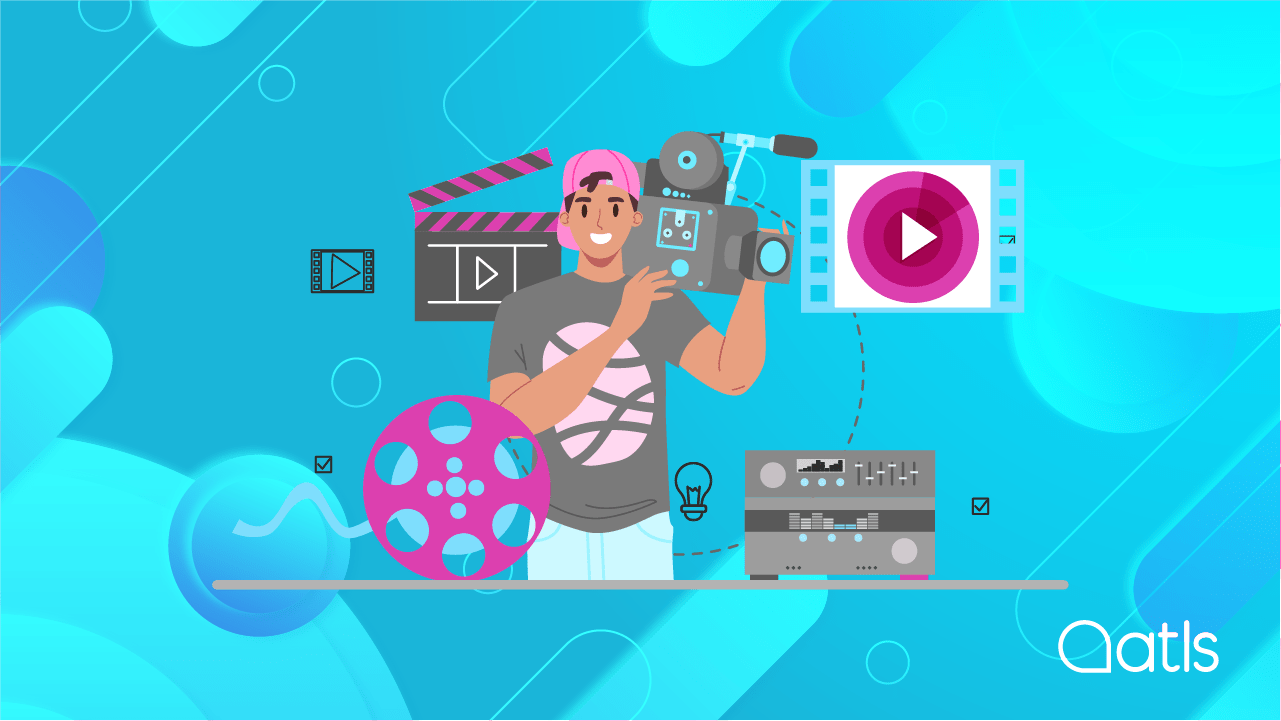What is audiovisual translation?

In a world where we are increasingly consuming audiovisual products, audiovisual translation is key to reaching other countries and cultures. Audiovisual translation has seen a dramatic increase in recent years: advertisements, films, series, corporate videos, training videos, documentaries, video games, interviews, conferences and much more.
Audiovisual translation consists of translating both images and sounds. It is applied in videos, films, series, advertisements, video games, etc. It encompasses different translation elements, such as dubbing, subtitling, accessible translation, transcription, video game localisation and more.
Contents
Characteristics of audiovisual translation
The main feature of audiovisual translation is the consideration that is given to cultural aspects of both texts and audio when translating, as they are translated precisely to be interpreted and maintain the tone of the original whilst also being adapted to the culture of the target language.
This means that the audiovisual translator must have a thorough knowledge of the colloquialisms and slang of the target language in addition to more formal knowledge of grammar and vocabulary. A great example is audiovisual translation of films, television series or any other fiction product where translators are required to translate jokes, expressions and swear words. As a result, the work is also incredibly complex. This complexity is then increased by the limitations of the structurally complicated format: the words need to gel with the movements and speech of the actors, and the message needs to be distilled into the few words that fit into two lines of subtitles.
Types of audiovisual translation
Audiovisual translation includes several different types: subtitling, dubbing, localisation of video games and transcription. Let's look at these different types in detail.
Subtitling
The purpose of subtitling is to convey the message of the person speaking to the viewer in writing in the viewer's own language. In this way, the viewer hears the original voice and reads the translated subtitles at the same time, to understand what is being communicated. To achieve a high quality result, it is essential to know the culture of both languages in depth, so that the translation perfectly reflects the language and expressions used in the original. Another important aspect is the length of the translation, as the translator must consider the amount of time the viewer needs to comfortably read the text on the screen.
Types of subtitling:
- In the same language as the video.
- In a different language.
- Subtitling for the hearing impaired.
- Live subtitling, which is used for events that happen in real time.
Dubbing
Dubbing, meanwhile, involves replacing voices and audio effects of audiovisual materials with other pre-recorded sounds in a language which is typically different from the original (although not always).
An audiovisual translator specialised in translation for dubbing receives exhaustive training in this specific subject, as there are so many aspects to consider such as lip syncing and the presence of a multidisciplinary team composed of translators, dialogue writers, actors, etc. There are also particularities between different types of dubbing. In the case of voice over, or superimposed voices, for example, lip synchronisation is not required, unlike the dubbing used for films and series.
Video game localisation
Video game localisation is a process that involves modifying and adapting the original content so the resulting product can be sold in different markets. There's a growing demand for this type of translation, aligned with the current boom in the video games sector - a fully globalised sector that produces games that can be marketed in any country across the world. Video game localisation is a complex process, but exactly how complex it is will depend on the type of video game being localised.
If a video game is being launched internationally, the elements that typically need to be localised are:
- Menus and interface: this is what stands between the player and the game itself, and enables interaction between the two.
- Dialogue: this is probably the most sensitive part in terms of localisation, where expressions which don't necessarily have a direct translation need to be adapted.
- Names of game elements: it's also important to localise the name of the various elements in a video game where necessary - such as names of characters or terminology which is unique to the game.
- Graphics.
Transcription
Linguistic transcription is the written reproduction of the text in a video or audio. There are two main types: verbatim transcription and edited or intelligent transcription.
Verbatim transcription
In this type of audio to text transcription, all sounds uttered are reflected in the document, including unfinished words, repetitions and filler. Even people talking over each and pronunciation errors are included, and they are transcribed correctly from an orthographic point of view. Legal transcripts, for example, are verbatim transcripts.
Edited or intelligent transcription
In this type of transcription, all sounds that are not relevant are discarded, as well as second guessing, tics and unnecessary pauses or repetitions. A style review is performed to make sure that the text flows properly and grammatical errors are cleaned up.
If you're looking for a quality audiovisual translation, get in touch!
At ATLS, we are at your disposal
Find out more about our audiovisual translation services.🙂




